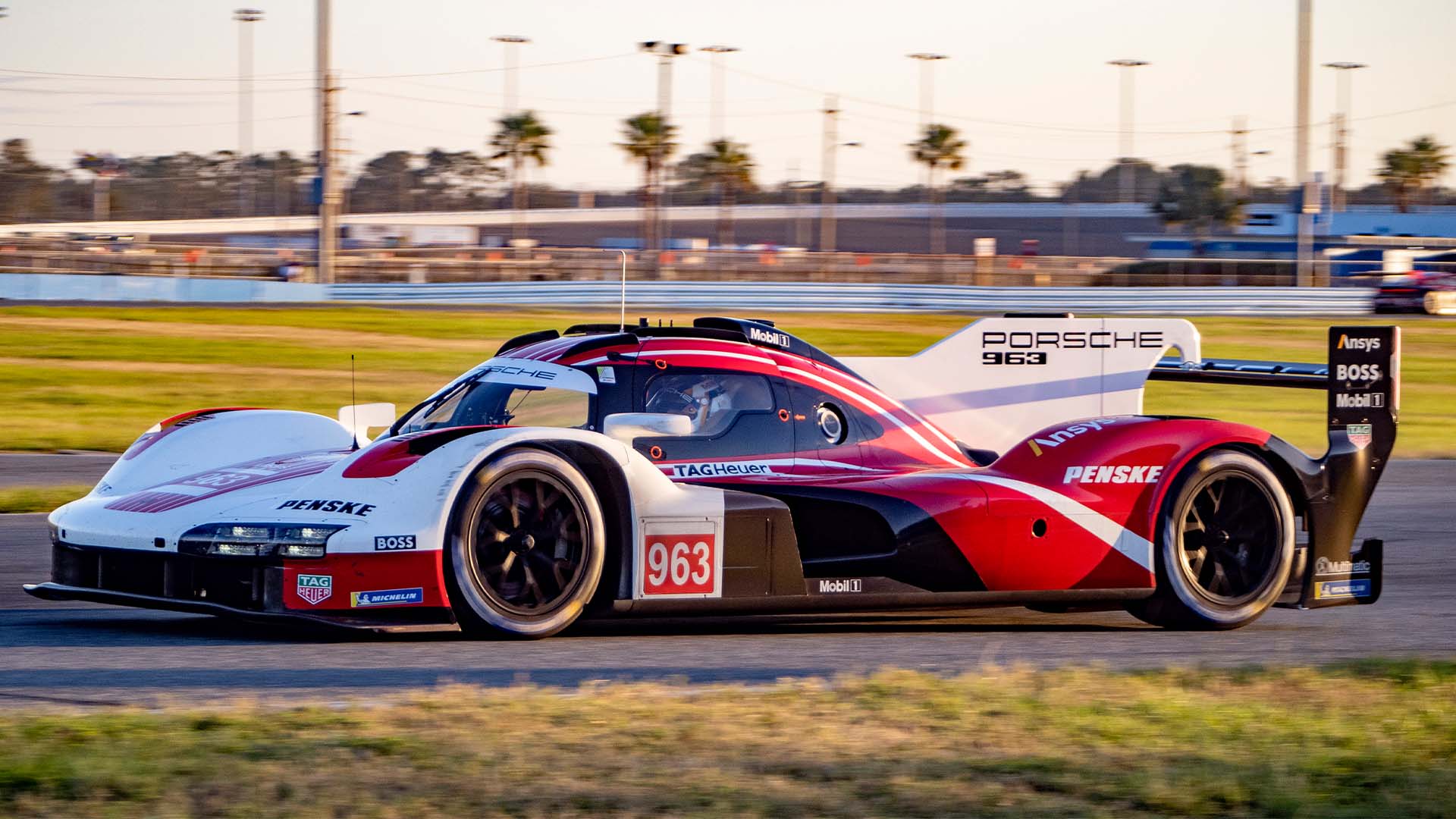

The Rolex 24 at Daytona is a big deal every year for sportscar racing fans, but the event’s 2023 running has the potential to impact American motorsport at large. With the mix of manufacturers and the diverse on-track packages entering IMSA this time around, it’s got NASCAR and IndyCar—both spec series, in more ways than a few—paying attention.
Electrification
A key component of this phenomenon is hybridization, something IndyCar is just now trying and NASCAR is still years away from. But IMSA’s GTP category is running it for real, this weekend, for 24 straight hours.
It’s been a long time coming to the states, as the World Endurance Championship’s LMP1-turned-Hypercar class has featured electrification since 2014. The difference is that manufacturers had to dump zillions into their cars to compete with big spenders like Porsche, then Audi, then Toyota under the old regulations. It wasn’t all that attractive to prospective newcomers because of this, though IMSA and the WEC have reached a promising agreement.

It allows for crossover between the two series with LMDh cars able to run in IMSA GTP as well as WEC Hypercar. For instance, we’ll see the Cadillac V-LMDh and Porsche 963 from this weekend’s event also run at Le Mans come June. That’s long been a no-no as Daytona-bound prototypes weren’t allowed at the French race under the previous rulesets. This is possible because both categories adhere to a similar set of regulations with a spec rear-axle hybrid system and a choice of four chassis suppliers: Dallara, Ligier, Multimatic, and Oreca. All the while, each manufacturer is allowed to develop their own internal combustion engine and production-reflective bodywork.
Everyone Can Finally Get Along
This seems to have stricken the perfect balance for manufacturers. They can enter IMSA’s top-flight category without enormous R&D costs to keep up on the hybrid front while still racing cars that are somewhat representative of their on-road offerings. All the while, they also get to campaign these machines outside the United States at the Circuit de la Sarthe, inarguably the world’s largest stage for endurance racing.

IndyCar, as entertaining and tightly contested as it is, can’t come close to this. It’s made do with the same two manufacturers for a decade now, and NASCAR has only done one better with three since Dodge left after 2012. Of course, IMSA won’t knock NASCAR—its parent company—off the perch as the most popular form of racing in the U.S. anytime soon, but IndyCar has a real reason for concern depending on how this year goes.
That’s what makes the 2023 Rolex 24 at Daytona so crucial. It’s the start of what might be IMSA’s greatest era since the original GTP cars tore up tracks in the ’80s and ’90s. With Acura, BMW, Cadillac, and Porsche all in this year, plus Lamborghini in 2024 as well as potentially McLaren, the future is bright for IMSA.

Got a tip or question for the author? Contact them directly: caleb@thedrive.com